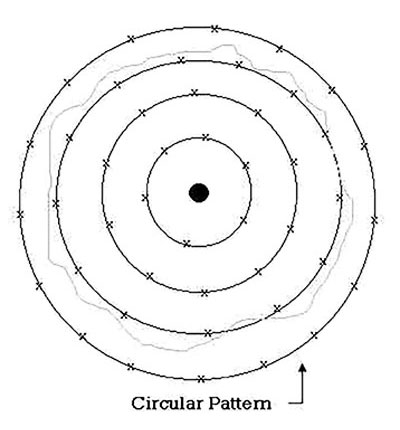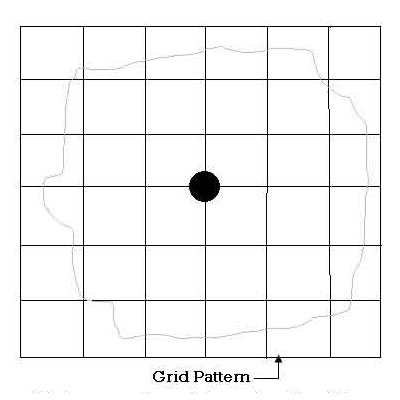Vertical Mulching for Trees
Vertical mulching, also known as “vertimulching” is a fairly common procedure used on trees to achieve any or all of the following goals:
- Aeration of the soil
- Partial decompaction of the soil
- Fertilization of the soil
- Inoculation of the Root Zone
The procedure is fairly standard, and various different products are employed to achieve the desired effects.
Overall Procedure
Vertical mulching involves the drilling of holes at regular spacing in the soil throughout the area directly beneath the canopy, starting from the trunk and extending just beyond the drip line.
Dimensions of Holes
Holes are drilled with a 2 to 3-inch wide auger bit to a depth of about 8 to 10-inches.
Drilling Equipment
Various earth augers are commercially available. Most are gasoline powered. Some are mounted on a truck, while others are hand-held, usually by at least two men.

Typical auger drill
Pattern of Drilling
Holes are drilled “on 2 ½ foot centers.” This is industry jargon, and it simply means that holes are spaced apart every 2 ½ feet following either a grid pattern, or a concentric circular pattern as diagrammed on the following page. The end result is a pattern of evenly spaced holes throughout the area underneath the canopy of the tree.
Filling Holes
Holes are filled with a variety of different mixtures, depending on the intended effect. For simple aeration, holes are often filled with pea gravel. For fertility, holes can be mixed with fertilizer diluted with soil. For inoculation with mycorrhizal fungi or rhizosphere bacteria, holes can be mixed with the appropriate inoculant. Typically the drill is used to mix the product with the soil by drilling a shallow hole, scooping the right amount of dry product into the hole, and then finishing the drilling. The drill effectively mixes the product with the soil while drilling the hole.
Vertimulch Drilling Patterns
Following are bird's eye views from above the tree looking through the canopy to the ground. The dark spot represents the trunk, while the irregular grey line represents the border of the canopy (the drip line).

Drill holes are made at each "x" spaced apart every 2-5 feet. Rings are also spaced apart by 2.5 feet. A circle of 40 ft. diameter (i.e. 40 ft. canopy spread) covers 1,250 sq. ft.

Drill holes are made at each intersection of the grid lines. Each of the lines are spaced apart by 2.5 feet.
Vertimulch Products
- ROOTS M-Roots: This is a standard amendment used to provide organic material and 3-3-3 fertility, all while inoculating with mycorrhizal fungi to increase water and nutrient absorption. The product is mixed with the soil in each hole.
- ROOTS Plant Saver: This is a deluxe vertical mulch treatment and contains a blend of ecto- and endomycorrhizal fungal spores, beneficial rhizosphere bacteria, 4-7-4 fertilizer, organic amendments, and a comprehensive selection of micronutrients designed to restore soil fertility and address the mineral requirements common to many plants.